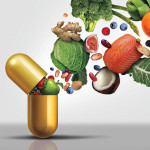Macrobiotics is a regrettable word. It suggests a psychiatric condition, a line of expensive hair-care products or a new pharmaceutical company. And it’s been typecast as an ascetic, hopelessly boring brown-rice diet. It isn’t any of those things, and it has helped me live with AIDS.
Macrobiotics (the word means long, or great, life) is a program for living, best known for its mostly vegetarian dietary guidelines. A Japanese healer developed it in the 1920s from ancient yogi and Taoist recommendations about diet, personal hygiene, and physical and spiritual exercise. The goal of the practice is to prevent and heal illnesses, and to provide tools for maintaining physical and emotional balance in an ever-changing environment.
In the past two decades, macrobiotics practitioners have applied the principles of the philosophy to present-day challenges such as AIDS and cancer. In the process, macrobiotics has lost some -- but not all -- of its early dogmatism: There’s a fine line between the strong commitment necessary to any healing discipline and the fanaticism practiced by fundamentalists.
To get acquainted with macrobiotics, one of the most helpful books is Paul Pitchford’s Healing With Whole Foods: Oriental Traditions and Modern Nutrition (North Atlantic Books/ Berkeley, California). An older book, AIDS, Macrobiotics & Natural Immunity by Michio Kushi, Martha Cottrell and Mark N. Mead (Japan Publications/ New York City), offers basic recipes and home remedies, and records the story of some courageous PWAs’ experiments with macrobiotics in the early ’80s, when conventional medicine had very little to offer. Gay PWAs had to maneuver around the homophobia of early macrobiotics, which saw homosexuality as an imbalance that might be corrected by diet. A representative of the Kushi Institute, the leading macrobiotics think tank, tells me that modern macrobiotics has outgrown this view.
The following macrobiotics teachings have stood the test of time (10 years) in my own program for wellness:
Eat a mostly plant-based diet of fresh, organic whole foods. Despite the impression given by some macrobiotics books (which usually suggest a diet of about 50 percent grains, 10 percent legumes, 25 percent vegetables, 10 percent animal foods, and 5 percent soups and beverages), there’s no such thing as “The Macrobiotic Diet.” Eating macrobiotically will mean something different for each person, depending on his or her age, gender, type of work, climatic region and season -- and most important, state of health.
For me, as a person with immune imbalance, this means drinking pure water and eating a wide variety of organic whole grains, legumes, soy products, seasonal fresh vegetables (from land and sea), fruits and small amounts of high-quality animal foods -- all prepared in ways that retain their nutrients. (Macrobiotics does emphasize cooked foods, which are easier to assimilate than raw ones, especially for people with digestive problems.) This diet gives my body the nutrients to support immunity and healing, and nurtures a calm emotional state. I avoid processed foods (white flour, refined sugar), foods with additives or preservatives, and unbalancing influences like caffeine and nicotine. The chief metaphor of macrobiotics is balance: Harmonic adaptation in the middle ground between extremes.
I often use home remedies to treat little ills (such as ginger tea for nausea or flatulence, and rice porridge for diarrhea). And I try to make food preparation and mealtimes part of my spiritual practice, visualizing these activities as a kind of “moving meditation.” (Usually this precludes eating while watching people scream at each other on Jenny Jones.)
Maintain a clean and harmonious home environment. I try to surround myself with as much comfort, serenity, light, fresh air and beauty as possible (which is less a function of economics than of creativity), to use environmentally friendly grooming and household products, and to dress for ease of movement in clothing made from natural materials. I seek out the company of plants, inviting them into my community, my house, my garden, my stomach.
Find an enjoyable form of exercise. In the morning, after I clean myself and bring some order to my surroundings (easier on some days than others), I devote time to moving my body. Practices such as tai chi and yoga, which share philosophical roots with macrobiotics, promote the flow of vital energy through the body and nurture immunity.
Live simply and with gratitude. Drugs may lower viral load (they have for me, thank God), but healing is something much deeper. Macrobiotics has taught me to see myself, including my illness, as part of a universal cycle of coming and going, losing and recovering. It has encouraged me to look for ways to be of service to the other creatures with whom I share this planet. There is a macrobiotic saying: “Every front has a back.” The front of AIDS is dark and full of fear, but the back -- for me at least -- is a place lit with infinite possibility.






Comments
Comments